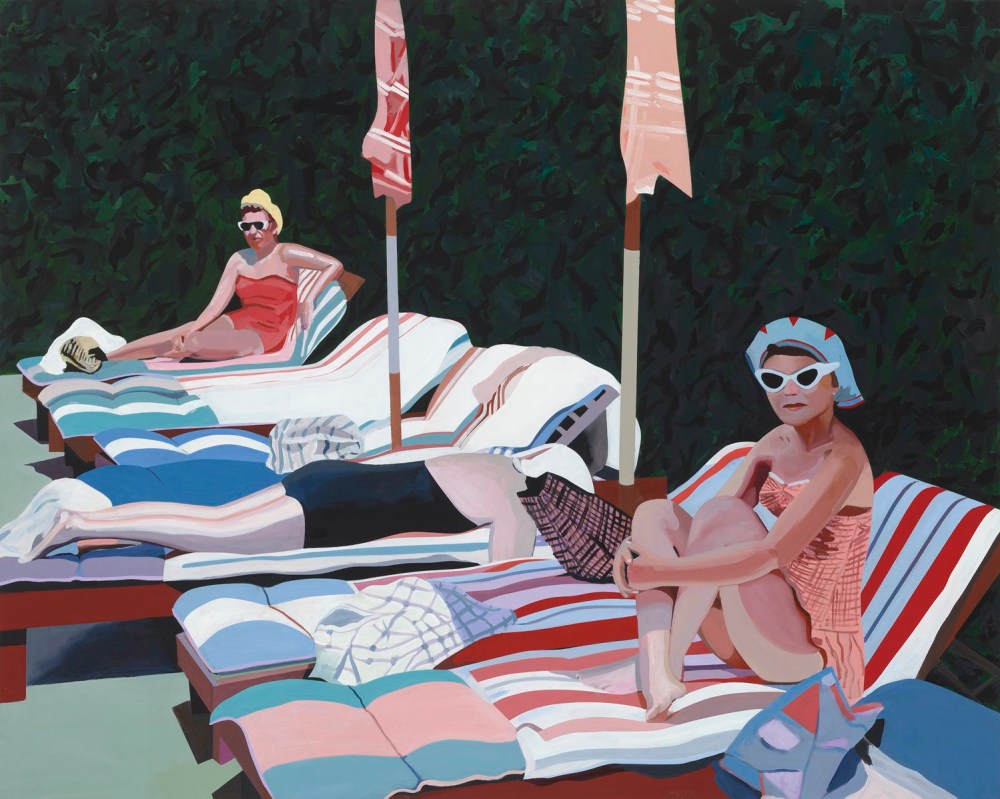Wandering amidst jumble shops and antique stores, vintage holes-in-the-wall, and flea markets, I always find myself lingering by the boxes of old photographs. There’s both a specificity and universality to these people who’ve been captured in time, frozen within a rectangle that, against all odds, has wound up in my palm. I’m far from alone in my fascination with old photographs and the anonymous figures and moments they preserve. I’ve previously spoken with multi-media artist Stan Squirewell who reworks archival photos from the 1900s with various collage techniques. Squirewell sees his pieces as bestowing a new life and legacy to those otherwise gone. “I’m always intrigued by the aspect of actually bringing forth things from the past,” he told me.
Painter Jessica Brilli aims to do the same.
We all have similar exposure to images that evoke nostalgic feelings. These images tap into similar experiences and memories, like an unspoken language that can bridge individual experiences from the broader cultural context.
Jessica Brilli

Brilli is preoccupied with nostalgia and how it can be portrayed visually through her paintbrush. After gathering 35mm Kodachrome slides and old photographs while traveling around the United States, she felt compelled to start painting them. “I view thousands of slides and photos to find the ones that move me emotionally,” she shares on her website. “I’m constantly on the hunt for photos that mirror scenes from my childhood or that I feel a connection to through personal or familial experience.”
Through this creative process, Brilli has found that many of her feelings surrounding these nostalgic images strike a chord with others. “My experiences are part of a common thread that many Americans share regardless of age, race, and gender,” she writes. “The images that produce a flood of involuntary memories for me often evoke similar cascades of feelings and thoughts in others. Why is this?” Brilli isn’t necessarily interested in answering this question but instead poses it tenderly with a discerning curiosity that guides her work.
Her paintings also explore the effect of color on memory. “When looking at vintage photography, I see the color as a built-in time stamp,” she elaborates. “Different types of film age in various ways because of unstable color dyes— the faded color scheme adds a Gestalt effect that evokes these nostalgic feelings.” As such, the carefully considered color palettes Brilli works with mirror and experiment with these same hues, conjuring warmth and sentimentality.
Something of a retro aesthetics obsessive myself, I quickly became immersed in the patina-soaked world of Brilli’s work upon first discovering her; I reached out directly to learn more. Brilli’s responses to my questions are below.
When did you first embark upon the process of painting from old Kodachrome slides and photographs? What initially sparked this project?
I had been painting vintage objects like typewriters and radios. I started collecting 35mm slides and photographs as an artistic exploration and soon realized they are also tangible artifacts. Photographs are also objects that carry unique narratives, emotions, and layers of history, and I wanted to capture and convey these complex moments that had been frozen in time.
Can you describe how it feels when you come upon a source image that speaks to you in such a way that compels you to paint it?
If the image resonates with me, it can be a visceral experience, going beyond the visual appeal. That emotional spark is a part of visual recognition. Sometimes, that spark has complex layers that are difficult to explain, and you want to explore and convey them to others.
What is it about retro aesthetics that you’re drawn to? Have you always had an affinity for that vintage look and feel?
I’ve always been drawn to retro aesthetics, not as a particular fondness for the past, but more the clean and simple designs of some vintage objects, particularly if there is a timeless elegance. The simplicity means less visual clutter, allowing each element to stand out.
You masterfully use color and shadow in your paintings— what’s your process like for nailing down your color palette for a given painting?
Thank you. I’d like to think that I’ve developed a deep understanding of the nuances of color, light, and shadow over time. I don’t let something go out of the studio unless I’m happy with it and it has the right look and feel.
Why do you think people respond so intensely to your paintings? Why is nostalgia so powerful?
To some degree, we all have similar exposure to images that evoke nostalgic feelings. These images tap into similar experiences and memories, like an unspoken language that can bridge individual experiences from the broader cultural context.